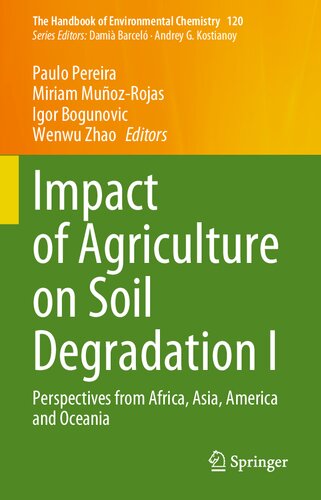

Most ebook files are in PDF format, so you can easily read them using various software such as Foxit Reader or directly on the Google Chrome browser.
Some ebook files are released by publishers in other formats such as .awz, .mobi, .epub, .fb2, etc. You may need to install specific software to read these formats on mobile/PC, such as Calibre.
Please read the tutorial at this link: https://ebookbell.com/faq
We offer FREE conversion to the popular formats you request; however, this may take some time. Therefore, right after payment, please email us, and we will try to provide the service as quickly as possible.
For some exceptional file formats or broken links (if any), please refrain from opening any disputes. Instead, email us first, and we will try to assist within a maximum of 6 hours.
EbookBell Team

0.0
0 reviewsThis is the first of two volumes that together provide a global overview of the impact of agriculture on soil degradation, tracing the most critical drivers like the use and abuse of agrochemicals, mechanization, overgrazing, irrigation, slash and burn agriculture, and the use of plastics.
This book covers the main effects of agriculture practices on soil degradation in several countries from Africa, America, Asia, and Oceania, and it elucidates the impact of chemical agents on soil quality, namely, the use of fertilizers, herbicides, pesticides, soil acidification and microplastics pollution. In these continents, a large number of the population depend on agriculture, which sets an enormous pressure on the ecosystems. Divided into 13 chapters, the book offers authoritative contributions about the fundamental soil degradation problems in countries such as Argentina, Australia, Peru and Bolivia, Brazil, Chile, China, Colombia, India, Israel, Kenya, Mexico, South Africa, the United States of America. As soil degradation issues are often linked with biodiversity loss and poverty, readers will also find in this book an important discussion of the different social, economic, political, and environmental aspects contributing to soil quality and sustainable management.
Given the breadth and depth of its coverage, the book offers an invaluable source of information for researchers, students, environmental managers and policymakers alike.